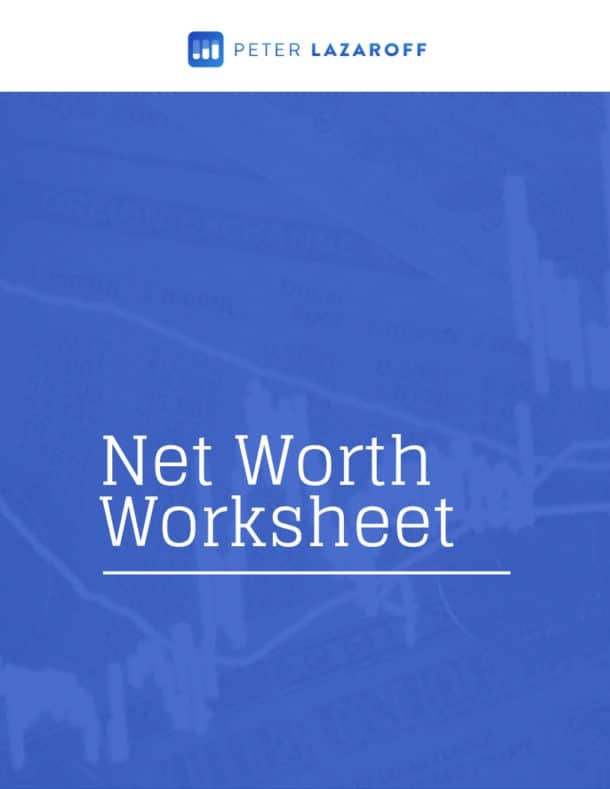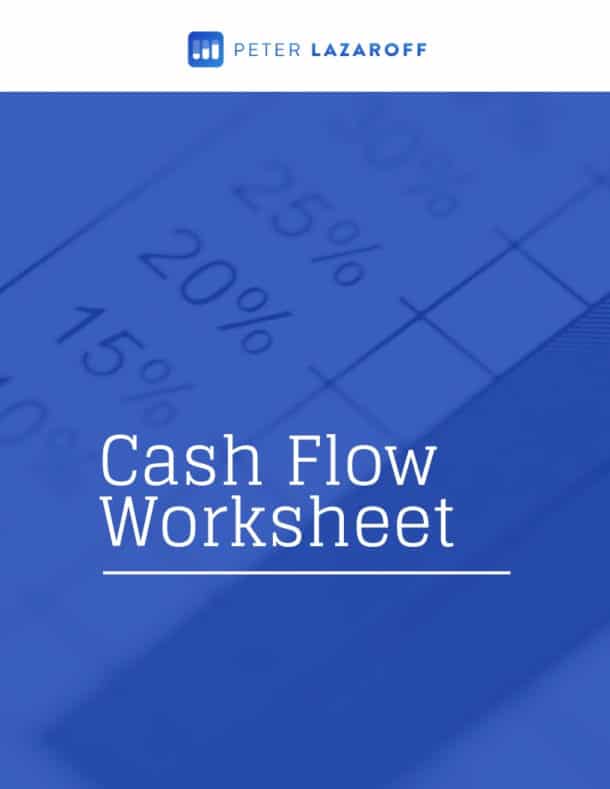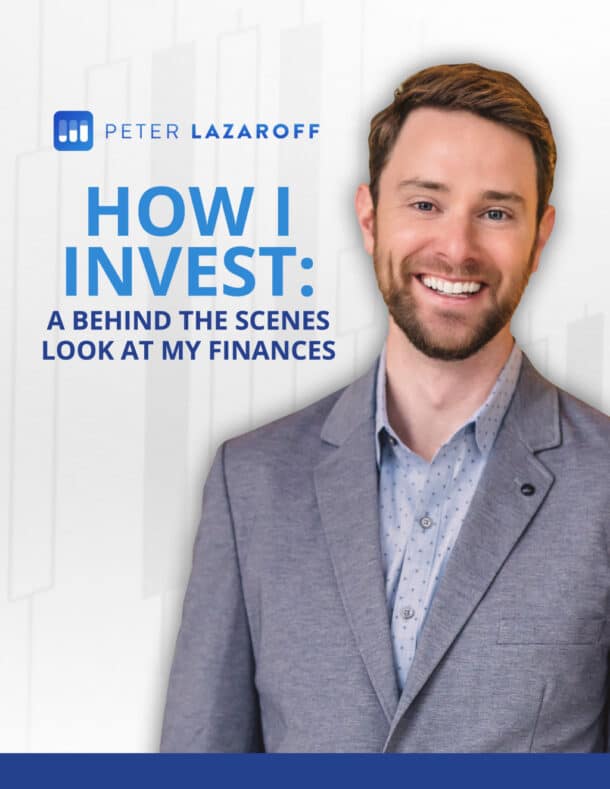Listen Now
We’ve all been to a lively dinner with a dozen friends where the conversation bounces from one end of the table to the other, glasses clink, and everyone seems to be ordering with reckless abandon.
One friend orders a round of craft cocktails. Another insists on the seafood tower “for the table,” even though you don’t eat shellfish. Someone else quietly orders the most expensive steak on the menu. You, being reasonable, stick with a modest entrée and maybe a glass of wine.
The meal ends, and the server comes over with the check. Only instead of asking how you’d like it split, they announce that the restaurant only accepts one card. The bill will be divided evenly across the table.
Suddenly, you’re subsidizing the cocktails you didn’t drink, the shellfish you didn’t touch, and that steak you never tasted. You didn’t choose those things—but you’re paying for them anyway.
That’s essentially how a mutual fund works. Investors pool their money together into one big pot, and a fund manager buys the securities that pot is supposed to hold. But when another investor decides to “cash out”—maybe to pay their own living expenses—the fund manager has to sell securities to raise that cash. Those sales realize gains or losses. And at the end of the year, those tax consequences get distributed to everyone who owns shares in the fund, whether they sold anything or not.
In other words, the actions of strangers at the table can directly affect your final bill. And just like a frustrating dinner check, it often leaves investors with a bad taste in their mouth. That frustration is a big reason why ETFs and SMAs became so popular—because they’re designed to give you more control over your own portion of the bill.
For decades, mutual funds were the default option—just like splitting the check evenly was the default at big group dinners. But investors eventually demanded better. They wanted their own bill. They wanted more control over the menu. And that demand gave rise to ETFs and SMAs, which have exploded in popularity over the past two decades.
Most of us already own mutual funds in our 401(k). ETFs have become the go-to option for low-cost, tax-efficient investing. And SMAs—once reserved for the ultra-wealthy—are now accessible to far more investors thanks to advances in technology.
But how exactly do these vehicles work? Why does the choice matter? And which one is right for you? That’s what we’ll unpack in this post. By the end, you’ll understand the differences, the trade-offs, and the situations where each one shines.
Sign up for my newsletter so you can easily reply to my emails with your thoughts or questions for the podcast:
Framing the Comparison: Mutual Funds, ETFs, and SMAs Explained Simply
I always start by putting everyone in the same simple scenario.
Let’s imagine you and I, along with a few other investors, decide we want to invest in a fund tracking the Russell 3000—a broad index that essentially captures the entire U.S. stock market.
If we do this with a mutual fund, we pool our money together, and the fund manager uses that money to go out and buy the stocks in the Russell 3000. Easy enough.
But here’s where it gets interesting. Suppose I want to sell my shares to cover living expenses. The mutual fund manager has to sell securities to raise cash for my redemption. When they do that, they realize gains and losses inside the portfolio. Those gains and losses get distributed to all shareholders at the end of the year. In other words, my decision to sell might create a tax bill for you—even if you didn’t sell anything.
That’s a quirk of mutual funds that makes them relatively tax-inefficient.
Now, compare that to an ETF that tracks the Russell 3000. On your brokerage statement, it looks almost identical—a ticker symbol, a value per share. But when I sell my ETF shares, the mechanics are completely different. It’s actually a bit complicated, so I’m going to simplify it a bit…Instead of the fund manager selling securities, the ETF manager transfers a basket of securities to a middleman known as an “authorized participant,” who handles the redemption in exchange for cash. Because the ETF manager never actually sells securities, my selling shares of the ETF to meet liquidity needs doesn’t trigger taxes that impact you and the other shareholders.
That’s one of the main reasons ETFs are more tax efficient.
And then there’s the SMA, or separately managed account. This is like having a mutual fund or ETF that’s just for you. Instead of pooling money with others, the asset manager is running the strategy in your own account. Same Russell 3000 exposure, but the stocks sit directly in your name. That means if we want to harvest losses, we don’t need the entire U.S. stock market to be down—we just need a handful of individual stocks in that index that happen to be trading below where we bought them. And trust me, there are always individual stocks trading at a loss, even in a year when the market is up.
That difference—tax-loss harvesting at the individual security level—is one of the biggest reasons SMAs have become more popular.
So at a high level:
- Mutual funds: pooled, tax inefficient, but easy and widely available.
- ETFs: pooled, but structured for tax efficiency and often cheaper.
- SMAs: not pooled, more customizable, and capable of generating tax alpha.
That’s the framework we’ll build on.
Now I’m going to look at each one individually and explain when they are most useful.
Mutual Funds: The Old Guard of Investing
Mutual funds have been around since the 1920s, but they became mainstream in the late 20th century, especially once employer-sponsored retirement plans like 401(k)s took off.
To me, the biggest advantage is that they are incredibly easy to trade.
In a 401(k) or IRA, it’s as simple as selecting a percentage of your contributions. In your brokerage account, you can trade specific dollar amounts and avoid having any sort of leftover cash from a transaction.
Mutual funds also provide access to certain active strategies that aren’t easily replicated in ETFs or SMAs, like some fixed income strategies or liquid alternatives. A big reason for this is that they are less transparent, which generally isn’t something you’re wanting, but ETFs effectively force active managers to show their hand to the market on a daily basis whereas the mutual fund wrapper allows them to better protect their “secret sauce.”
Now before all of you passive nuts go crazy, I’d encourage you to check out EP.99: The Problem with Bond Indexes. The active vs passive debate simply is not the same with fixed income as it is with equities, so go check that out.
The biggest drawback of mutual funds is the one we’ve already discussed: tax inefficiency. Because of the way redemptions work, you’re at the mercy of other shareholders. If enough people redeem, the fund might have to sell appreciated securities, creating taxable gains that get distributed to everyone—even if you never sold.
That’s why I sometimes say mutual funds can feel like “tax surprise generators.”
Do they still have a role? Absolutely. Mutual funds dominate retirement plans. And when mutual funds have an ETF share class—something that currently only Vanguard is legally allowed to do, but it sounds like a ETF share class exemption is coming from the SEC for other asset managers—then the tax efficiency issue isn’t as prevalent.
I’ll be sure to explain this more in a future episode, but I think it’s probably beyond the scope of today’s conversation.
ETFs: The Tax-Efficient Revolution
ETFs—exchange-traded funds—first came around in the 1990s, but their popularity really skyrocketed after the 2008 financial crisis. Today, they’ve overtaken mutual funds in new flows.
On the surface, ETFs look a lot like mutual funds. Same idea: pooled money, professionally managed, often tracking an index. But under the hood, the structure is very different.
The key distinction is the creation and redemption process. When new shares are created or redeemed, the ETF manager works with authorized participants—essentially large institutional middlemen—to exchange securities “in kind.” That means the ETF isn’t constantly selling securities to raise cash. Instead, they hand off securities directly to the authorized participant.
That small difference in plumbing creates a huge difference in outcomes: ETFs rarely generate taxable capital gains from investor flows.
Now, that doesn’t mean you can’t get a capital gains distribution from an ETF, but it’s far less likely to come from investor inflows and outflows. That they create no taxable distributions is a small misconception I hear from time to time.
Another thing that people will point out as a positive is that they generally are free to trade, which is true, but also a bit misleading.
It’s Not Free: Why You Need to Take a Closer Look at Commission-Free Trading
This is far from a reason to embrace ETFs—I just think it’s worth clarifying because most people will point to the cost of mutual fund commissions as a reason to embrace ETFs, which often have no trading commissions—and I think that’s a mistake.
All else equal, you should want to own ETFs over mutual funds, especially in taxable accounts. There’s also an argument can be made that it’s worth being in a mutual fund wrapper for some fixed income strategies, but we are really getting into the weeds at that point. You would really need to know how the fixed income manager is taking advantage of that to really justify choosing a mutual fund over ETF wrapper.
Another more recent benefit of ETFs is the ability to participate in 351 exchanges. Plancorp just participated in our first 351 exchange this year, so that’s something I intend to cover in an upcoming episode as well.
One last thing: it’s not worth realizing capital gains to get out of a mutual fund and into an ETF that follows effectively the same strategy. Yes, the ETF is more tax efficient, but it’s not so much so that it’s worth justifying big gains. My unscientific guess is that it would take multiple decades to recover the cost of a tax bill, at best.
SMAs: Customization, Control, and Tax Alpha
Now let’s talk about SMAs.
Based on the thousands of investors’ portfolios I see every year of all shapes and sizes, I would say that the SMA is the most underutilized vehicle among investors with at least $5 million in assets, but the most overutilized vehicle among investors with less than, say $2 million.
A separately managed account is like having a mutual fund or ETF that’s built just for you. Instead of pooling your money with other investors, the asset manager runs the portfolio in your own account, in your own name.
The advantages are powerful.
- Customization: If you want to exclude certain stocks for ESG reasons, you can. If you have concentrated stock positions, the manager can build around them.
- Tax efficiency: Because you directly own the stocks, you can harvest losses at the security level—even when the market overall is up.
Let’s go back to our Russell 3000 example. If you bought a mutual fund or ETF tracking the entire U.S. stock market in March 2020, you wouldn’t have had a chance to harvest losses unless the market fell 30 or 40% below that level. That’s rare.
But in an SMA, even if the index is up, many individual stocks within it will still be trading below your purchase price at some point during the year. Those losses can be harvested to offset gains elsewhere in your portfolio or even ordinary income in some cases.
That’s tax alpha—the ability to improve after-tax returns through proactive management.
Of course, SMAs aren’t perfect. They cost a bit more than ETFs—say, 10 basis points more. And they add complexity.
In my opinion, if you don’t have a clear use for the capital losses, it doesn’t make sense to generate them just for the sake of it. I’m not a fan of “banking losses” with no plan to use them.
EP 162: When Tax-Loss Harvesting Makes Sense (And When It Doesn’t)
When SMAs Make Sense—and When They Don’t
So who should consider an SMA?
The starting point for me is higher net-worth investors who are overweight liquidity. Being “overweight liquidity,” means that you realistically don’t expect to spend your money down to zero in your lifetime is usually the line I draw in the sand for who should and shouldn’t consider an SMA.
When we use SMAs at Plancorp, we want to allocate enough to them to have a meaningful tax benefit, but not so much that it would interfere with rebalancing opportunities or potentially be needed to meet liquidity needs.
Because when you have an account that’s constantly harvesting losses and holding winners, you end up with a low basis pot of money, so you ideally want to die with this pot of money and get a step up in basis. These days, there are strategies like doing a long/short overlay on the SMA or utilizing a 351 exchange to move an ossified SMA into an ETF, but those strategies are beyond the scope of this conversation—I really only mention them to highlight the creativity that Plancorp can apply to tricky tax situations.
So, back to what I was saying, you want to allocate enough to a SMA to make a meaningful tax benefit, but not so much that it would interfere with rebalancing opportunities or potentially be need to meet liquidity needs.
Here’s how we do it at Plancorp, and I’m going to use a $1 million portfolio to keep the math simple. For starters, we have 70% of our stock allocation in US stocks and 30% in international. You can use SMAs to get your non-US stock exposure, but I prefer to stick to the US and to stay as broad market with a SMA exposure as possible.
The reason is two fold:
First, you want a big enough opportunity set to have plentiful tax loss harvesting opportunities. So if you have a SMA tasked with tracking the Russell 3000, that’s plenty of companies to potentially tax loss harvest in any given year. And remember, even in up years for the market, a large percentage of stocks trade at losses.
The other reason I prefer broad market exposure to something more targeted like small caps or non-US exposure, is that broad market exposure represents the largest allocation within our equity portfolio.
If you’re still reading, now you get some secret sauce that I don’t think I’ve ever shared publicly like this. We have three equity strategies at Plancorp: (1) Index, (2) Factor, and (3) ESG. I’d say that 95% of our clients utilize a Factor equity strategy which means that they own the entire market, but have strategic overweights to certain factors that have historically carried higher expected returns.
When I say that our Factor strategy still owns the entire market, roughly 60% of our US allocation is broad market exposure. That means 42% of our total US and non-US equity exposure is broad US market exposure, which is a nice large bucket to draw from for a SMA.
So imagine you have a $1 million portfolio in a 70/30 allocation, a starting point for how much we might allocate to a SMA would be 50% of our broad US market exposure. Again, our broad US market exposure is 42% of the equity allocation—.42 of the 70% equity allocation is 29.4% of the $1 million portfolio. Half of that is just less than $150,000 that would be a starting point for how big the SMA might be in a $1 million portfolio.
But is that big enough to create meaningful tax alpha? I’d say it is not. Now, if you’re a business owner that is worth $10 million that you will someday sell but your liquid portfolio is only $1 million, then I’d say it is worth it because those losses generated are better than nothing since you know you will have a use case for them.
In fact, I’ve worked with clients where we go well beyond the starting point I outlined (that’s why it’s a starting point, not a hard-and-fast rule).
And customization needs changes the conversation as well. I’ve mentioned ESG considerations, but I honestly think the more common needs involve building around existing portfolio assets or having the SMA manager apply an options overlay.
A decent rule of thumb is that you shouldn’t put more in an SMA than you reasonably expect never to touch. For example, in a $1 million portfolio with 70% in stocks, maybe $200–250,000 is appropriate for an SMA. But it depends on your personal circumstances.
I’ve shared a lot here and I hope the additional context is helpful.
In summary, SMAs should be considered by higher-net-worth investors who either:
- Have taxable assets they don’t plan to touch in their lifetime.
- Have a concentrated position they need to diversify.
- Or want specific customization needs due to individual stocks or sector ETFs with meaningful capital gains, or specific ESG preferences.
And I’d be remiss if I didn’t mention direct indexing—a modern version of the SMA that’s rapidly growing. I did a whole episode on this—EP 95: What is Direct Indexing?—so check that out if you want a deeper dive.
Head-to-Head Comparisons: Mutual Funds vs ETFs vs SMAs
So let’s stack these side by side.
- Mutual funds are the legacy product—useful in retirement accounts, some bond strategies, and niches like hedge fund strategies (although I’m not really a fan of those).
- ETFs are the workhorse for most investors—cheap, tax efficient, and widely available.
- SMAs are for investors with larger portfolios, customization needs, or tax-sensitive situations.
Costs matter, but they’re not everything. Sometimes paying slightly more for an SMA makes sense if you’re getting the value of customization and tax alpha. Other times, the cheapest ETF is the right answer.
One interesting behavioral angle: SMAs can actually be helpful for people who like the feeling of owning individual stocks.
I’ve said this many times: picking individual stocks is risky, and most people underperform. But with an SMA, you see the names on your statement, you feel like you own the stocks—but it’s all managed professionally and diversified intelligently. That can be a win-win.
Transparency, though, cuts both ways. Seeing daily performance of individual positions can tempt people to tinker. The best portfolios are often the most boring.
And that’s the danger with all these vehicles: investors chasing novelty. Whether it’s active ETFs, liquid alts, or direct indexing, the wrapper is less important than the discipline.
The Future of Investing Vehicles: ETFs, SMAs, and the Decline of Mutual Funds
So where are we headed?
Mutual funds will continue to decline outside of retirement plans. ETFs will keep dominating flows. And SMAs will keep growing as costs fall and technology makes them more accessible.
Two developments to watch:
- 351 exchanges—a tax strategy gaining traction.
- SEC share class exemption—if this happens, mutual funds could spin off ETF share classes, making it possible for investors to switch without triggering capital gains.
Both could accelerate ETF adoption even further.
Closing Reflection: Choosing the Right ‘Table’ for Your Perfect Portfolio
So what’s the bottom line?
Ultimately, the “perfect portfolio” isn’t about picking one vehicle over another. It’s about choosing the right combination for your situation, your goals, and your behavior. Because in the end, the wrapper matters less than the discipline and intentionality behind your choices.
Until next time, stay disciplined, think long-term, and remember: investing success isn’t about chasing vehicles—it’s about building the perfect portfolio for you.
Resources:
- EP.99: The Problem with Bond Indexes
- It’s Not Free: Why You Need to Take a Closer Look at Commission-Free Trading
- EP 162: When Tax-Loss Harvesting Makes Sense (And When It Doesn’t)
- EP 95: What is Direct Indexing?
- EP 166: Why You Don’t Have To Pick Winning Stocks
The Long Term Investor audio is edited by the team at The Podcast Consultant
Submit Your Question For the Podcast
Do you have a financial or investing question you want answered? Submit your question through the “Ask Me Anything” form at the bottom of my podcast page.
Support the Show
Thank you for being a listener to The Long Term Investor Podcast. If you’d like to help spread the word and help other listeners find the show, please click here to leave a review.
I read every single one and appreciate you taking the time to let me know what you think.
Free Financial Assessment
Do you want to make smart decisions with your money? Discover your biggest opportunities in just a few questions with my Financial Wellness Assessment.

Disclosure: This content, which contains security-related opinions and/or information, is provided for informational purposes only and should not be relied upon in any manner as professional advice, or an endorsement of any practices, products or services. There can be no guarantees or assurances that the views expressed here will be applicable for any particular facts or circumstances, and should not be relied upon in any manner. You should consult your own advisers as to legal, business, tax, and other related matters concerning any investment.
The commentary in this “post” (including any related blog, podcasts, videos, and social media) reflects the personal opinions, viewpoints, and analyses of the Plancorp LLC employees providing such comments, and should not be regarded the views of Plancorp LLC. or its respective affiliates or as a description of advisory services provided by Plancorp LLC or performance returns of any Plancorp LLC client.
References to any securities or digital assets, or performance data, are for illustrative purposes only and do not constitute an investment recommendation or offer to provide investment advisory services. Charts and graphs provided within are for informational purposes solely and should not be relied upon when making any investment decision. Past performance is not indicative of future results. The content speaks only as of the date indicated. Any projections, estimates, forecasts, targets, prospects, and/or opinions expressed in these materials are subject to change without notice and may differ or be contrary to opinions expressed by others.
Please see disclosures here.
















